更新時間:2022-06-27 10:33:59 來源:動力節(jié)點 瀏覽1711次
在Java教程中,MyBatis是學(xué)習(xí)課程之一,MyBatis 的初始化以及執(zhí)行一條 SQL 語句的全流程中也包含了配置解析,我們在現(xiàn)實開發(fā)中一般都是使用spring boot starter的自動配置。我們一項目啟動為起點一層一層剝開Mybatis的流程。先打開org.mybatis.spring.boot.autoconfigure.MybatisAutoConfiguration首先明確一點就是MybatisAutoConfiguration的目的就是要得到一個SqlSessionFactory。
??@Bean
??@ConditionalOnMissingBean
??public?SqlSessionFactory?sqlSessionFactory(DataSource?dataSource)?throws?Exception?{
????SqlSessionFactoryBean?factory?=?new?SqlSessionFactoryBean();
????factory.setDataSource(dataSource);
????factory.setVfs(SpringBootVFS.class);
????if?(StringUtils.hasText(this.properties.getConfigLocation()))?{
??????factory.setConfigLocation(this.resourceLoader.getResource(this.properties.getConfigLocation()));
????}
????Configuration?configuration?=?this.properties.getConfiguration();
????if?(configuration?==?null?&&?!StringUtils.hasText(this.properties.getConfigLocation()))?{
??????configuration?=?new?Configuration();
????}
????if?(configuration?!=?null?&&?!CollectionUtils.isEmpty(this.configurationCustomizers))?{
??????for?(ConfigurationCustomizer?customizer?:?this.configurationCustomizers)?{
????????customizer.customize(configuration);
??????}
????}
????factory.setConfiguration(configuration);
????if?(this.properties.getConfigurationProperties()?!=?null)?{
??????factory.setConfigurationProperties(this.properties.getConfigurationProperties());
????}
????if?(!ObjectUtils.isEmpty(this.interceptors))?{
??????factory.setPlugins(this.interceptors);
????}
????if?(this.databaseIdProvider?!=?null)?{
??????factory.setDatabaseIdProvider(this.databaseIdProvider);
????}
????if?(StringUtils.hasLength(this.properties.getTypeAliasesPackage()))?{
??????factory.setTypeAliasesPackage(this.properties.getTypeAliasesPackage());
????}
????if?(StringUtils.hasLength(this.properties.getTypeHandlersPackage()))?{
??????factory.setTypeHandlersPackage(this.properties.getTypeHandlersPackage());
????}
????if?(!ObjectUtils.isEmpty(this.properties.resolveMapperLocations()))?{
??????factory.setMapperLocations(this.properties.resolveMapperLocations());
????}
????return?factory.getObject();
??}
這里是通過MybatisProperties里面的配置并放入到SqlSessionFactoryBean中,再由SqlSessionFactoryBean得到SqlSessionFactory。看到最后一行return factory.getObject();我們進(jìn)去看看這個factory.getObject()的邏輯是如何得到一個SqlSessionFactory。
@Override
public SqlSessionFactory getObject() throws Exception {
if (this.sqlSessionFactory == null) {
afterPropertiesSet();
}
return this.sqlSessionFactory;
}
看看afterPropertiesSet()方法
@Override
public void afterPropertiesSet() throws Exception {
notNull(dataSource, "Property 'dataSource' is required");
notNull(sqlSessionFactoryBuilder, "Property 'sqlSessionFactoryBuilder' is required");
state((configuration == null && configLocation == null) || !(configuration != null && configLocation != null),
"Property 'configuration' and 'configLocation' can not specified with together");
this.sqlSessionFactory = buildSqlSessionFactory();
}
重點來了,看看這個buildSqlSessionFactory()方法這里的核心目的就是將configurationProperties解析到Configuration對象中。代碼太長了就不貼出來了, buildSqlSessionFactory()的邏輯我畫了個圖,有興趣的小伙伴自行看一下。
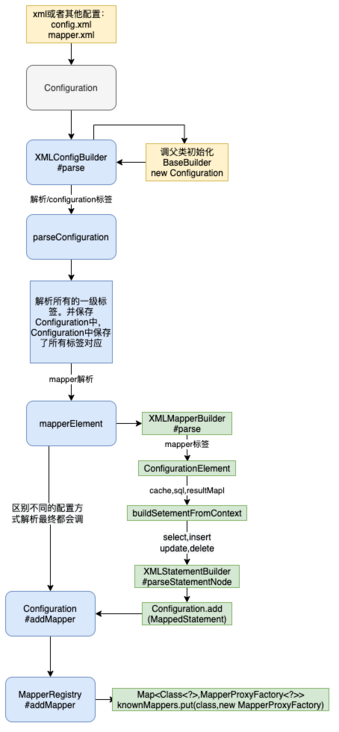
Mybatis配置解析1
我們不要陷入細(xì)節(jié)之中,我們看看中點看看buildSqlSessionFactory() 方法的最后一行this.sqlSessionFactoryBuilder.build(configuration)點進(jìn)去
public SqlSessionFactory build(Configuration config) {
return new DefaultSqlSessionFactory(config);
}
通過buildSqlSessionFactory()解析得到的Configuration對象創(chuàng)建一個DefaultSqlSessionFactory(config),到此我們就得到了SqlSessionFactory同時被配置成一個bean了。
我們最終操作都是SqlSession,什么時候會通過SqlSessionFactory得到一個SqlSession呢?
要解決這個問題我們回到最開始的MybatisAutoConfiguration的sqlSessionTemplate(SqlSessionFactory sqlSessionFactory)這個方法,點開SqlSessionTemplate發(fā)現(xiàn)它是一個實現(xiàn)了SqlSession到這里我們猜測就是在這里SqlSessionFactory會構(gòu)建一個SqlSession出來。我們進(jìn)入new SqlSessionTemplate(sqlSessionFactory)看看源碼。
public SqlSessionTemplate(SqlSessionFactory sqlSessionFactory) {
this(sqlSessionFactory, sqlSessionFactory.getConfiguration().getDefaultExecutorType());
}
再往下看,我們就看到了
public SqlSessionTemplate(SqlSessionFactory sqlSessionFactory, ExecutorType executorType,
PersistenceExceptionTranslator exceptionTranslator) {
notNull(sqlSessionFactory, "Property 'sqlSessionFactory' is required");
notNull(executorType, "Property 'executorType' is required");
this.sqlSessionFactory = sqlSessionFactory;
this.executorType = executorType;
this.exceptionTranslator = exceptionTranslator;
this.sqlSessionProxy = (SqlSession) newProxyInstance(
SqlSessionFactory.class.getClassLoader(),
new Class[] { SqlSession.class },
new SqlSessionInterceptor());
}
這里通過動態(tài)代理創(chuàng)建了一個SqlSession。
我們先看一下MapperFactoryBean類,這個類實現(xiàn)了FactoryBean在bean初始化的時候會調(diào)用getObject()方法我們看看這個類下重寫的getObject()方法里的內(nèi)容。
@Override
public T getObject() throws Exception {
return getSqlSession().getMapper(this.mapperInterface);
}
這里調(diào)用了sqlSession的getMapper()方法。一層一層點進(jìn)去里面返回的是一個代理對象。最后的執(zhí)行是由MapperProxy執(zhí)行。
public <T> T getMapper(Class<T> type, SqlSession sqlSession) {
final MapperProxyFactory<T> mapperProxyFactory = (MapperProxyFactory<T>) knownMappers.get(type);
if (mapperProxyFactory == null) {
throw new BindingException("Type " + type + " is not known to the MapperRegistry.");
}
try {
return mapperProxyFactory.newInstance(sqlSession);
} catch (Exception e) {
throw new BindingException("Error getting mapper instance. Cause: " + e, e);
}
}
接下來的流程還是畫個流程圖,防止小伙伴們走丟。
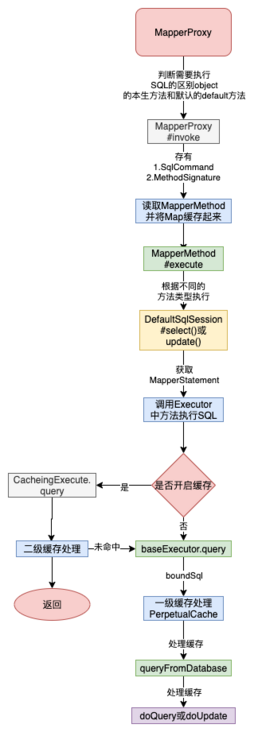
先看一下MapperProxy中的invoke方法,cachedMapperMethod()方法將MapperMethod緩存起來了。
@Override
public Object invoke(Object proxy, Method method, Object[] args) throws Throwable {
try {
if (Object.class.equals(method.getDeclaringClass())) {
return method.invoke(this, args);
} else if (isDefaultMethod(method)) {
return invokeDefaultMethod(proxy, method, args);
}
} catch (Throwable t) {
throw ExceptionUtil.unwrapThrowable(t);
}
final MapperMethod mapperMethod = cachedMapperMethod(method);
return mapperMethod.execute(sqlSession, args);
}
private MapperMethod cachedMapperMethod(Method method) {
MapperMethod mapperMethod = methodCache.get(method);
if (mapperMethod == null) {
mapperMethod = new MapperMethod(mapperInterface, method, sqlSession.getConfiguration());
methodCache.put(method, mapperMethod);
}
return mapperMethod;
}
我們在往下看mapperMethod.execute(sqlSession, args)方法。
public Object execute(SqlSession sqlSession, Object[] args) {
Object result;
switch (command.getType()) {
case INSERT: {
Object param = method.convertArgsToSqlCommandParam(args);
result = rowCountResult(sqlSession.insert(command.getName(), param));
break;
}
case UPDATE: {
Object param = method.convertArgsToSqlCommandParam(args);
result = rowCountResult(sqlSession.update(command.getName(), param));
break;
}
case DELETE: {
Object param = method.convertArgsToSqlCommandParam(args);
result = rowCountResult(sqlSession.delete(command.getName(), param));
break;
}
case SELECT:
if (method.returnsVoid() && method.hasResultHandler()) {
executeWithResultHandler(sqlSession, args);
result = null;
} else if (method.returnsMany()) {
result = executeForMany(sqlSession, args);
} else if (method.returnsMap()) {
result = executeForMap(sqlSession, args);
} else if (method.returnsCursor()) {
result = executeForCursor(sqlSession, args);
} else {
Object param = method.convertArgsToSqlCommandParam(args);
result = sqlSession.selectOne(command.getName(), param);
}
break;
case FLUSH:
result = sqlSession.flushStatements();
break;
default:
throw new BindingException("Unknown execution method for: " + command.getName());
}
if (result == null && method.getReturnType().isPrimitive() && !method.returnsVoid()) {
throw new BindingException("Mapper method '" + command.getName()
+ " attempted to return null from a method with a primitive return type (" + method.getReturnType() + ").");
}
return result;
}
method.convertArgsToSqlCommandParam(args)這里就是處理參數(shù)轉(zhuǎn)換的邏輯。還有很多細(xì)節(jié)由于篇幅有限以及時間倉促我們不做過多的贅述,感興趣的小伙伴可以結(jié)合上面的圖自己看看。下面我們看SQL的執(zhí)行流程是怎么樣的。整體流程如下圖。
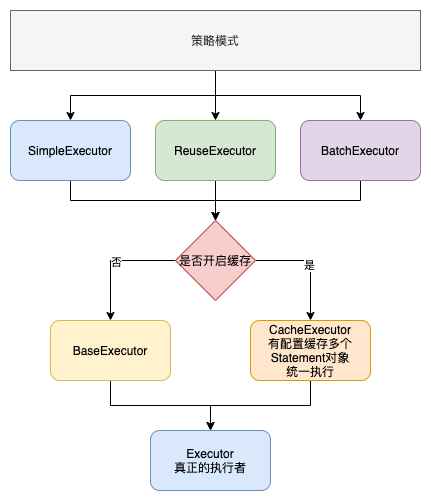
我們就不對每一個執(zhí)行器都分析,我只挑一個SimpleExecutor來具體跟一下源碼。我們還是先看看圖吧,防止自己把自己搞蒙。
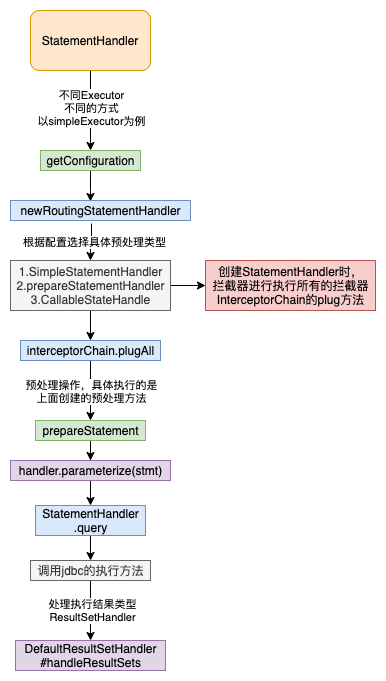
以simpleExecutor為例的執(zhí)行流程
@Override
public <E> List<E> doQuery(MappedStatement ms, Object parameter, RowBounds rowBounds, ResultHandler resultHandler, BoundSql boundSql) throws SQLException {
Statement stmt = null;
try {
Configuration configuration = ms.getConfiguration();
StatementHandler handler = configuration.newStatementHandler(wrapper, ms, parameter, rowBounds, resultHandler, boundSql);
stmt = prepareStatement(handler, ms.getStatementLog());
return handler.<E>query(stmt, resultHandler);
} finally {
closeStatement(stmt);
}
}
這里獲取了Configuration,創(chuàng)建了一個StatementHandler,預(yù)處理操作,具體執(zhí)行的根據(jù)創(chuàng)建的預(yù)處理方法,最后執(zhí)行query方法
@Override
public <E> List<E> query(Statement statement, ResultHandler resultHandler) throws SQLException {
String sql = boundSql.getSql();
statement.execute(sql);
return resultSetHandler.<E>handleResultSets(statement);
}
以上就是關(guān)于“MyBatis源碼分析”的介紹,大家如果對此比較感興趣,想了解更多相關(guān)知識,可以關(guān)注一下動力節(jié)點的Mybatis視頻教程,里面的課程內(nèi)容由淺到深,細(xì)致全面,通俗易懂,適合小白學(xué)習(xí),希望對大家能夠有所幫助。



初級 202925

初級 203221
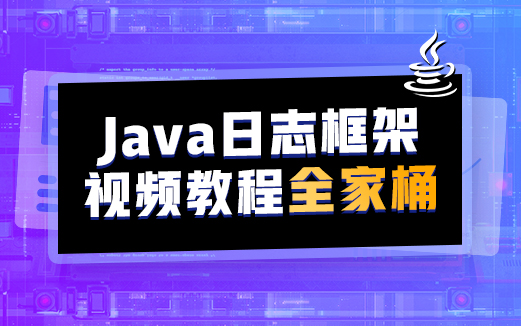
初級 202629

初級 203743